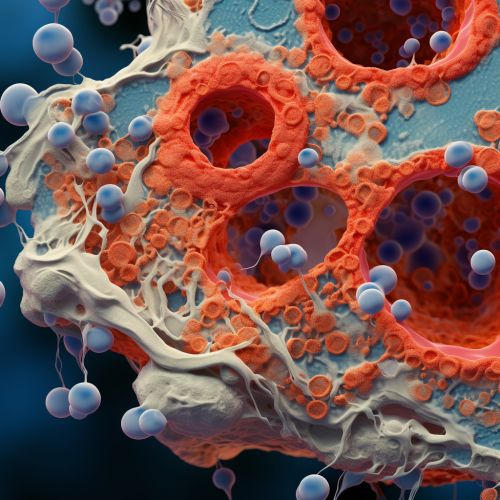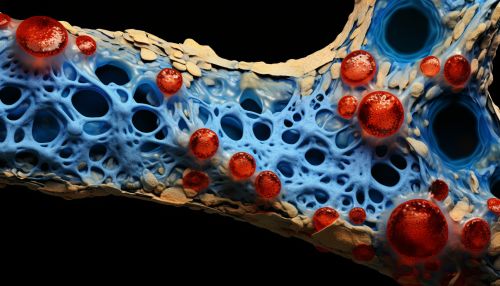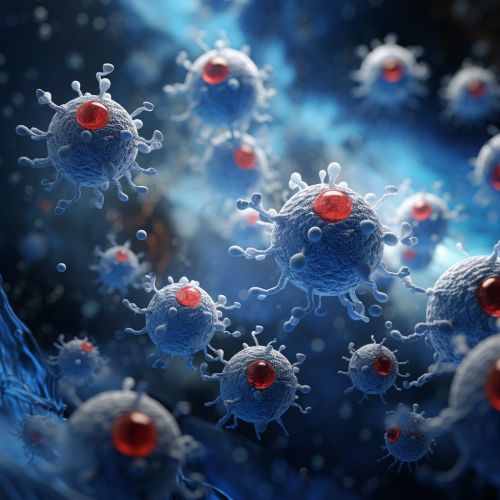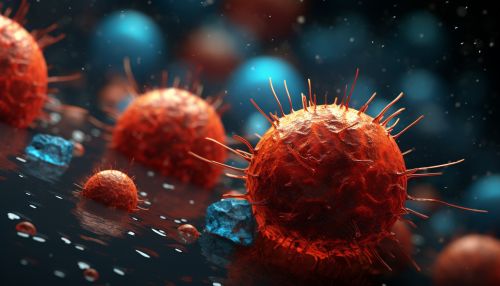B cell development
Overview
B cell development, a crucial aspect of the adaptive immune response, involves the maturation of B cells from hematopoietic stem cells (HSCs) in the bone marrow. This process is characterized by a series of genetic rearrangements and selection processes to ensure the production of functional B cells that can respond to a vast array of antigens, while avoiding self-reactivity.
Hematopoietic Stem Cells and Early Progenitors
B cell development begins with HSCs in the bone marrow. These pluripotent cells have the ability to differentiate into all blood cell lineages, including B cells. The first committed step towards the B cell lineage is the differentiation of HSCs into multipotent progenitors (MPPs), which still retain the ability to differentiate into other lineages, but are increasingly biased towards the lymphoid lineage.


Pro-B Cells
The next stage in B cell development is the Pro-B cell stage. This stage is characterized by the rearrangement of the immunoglobulin heavy chain (IgH) genes. This process involves the random joining of variable (V), diversity (D), and joining (J) gene segments, a process mediated by enzymes such as RAG1/2. This rearrangement process is crucial for the generation of a diverse B cell repertoire.
Pre-B Cells
Following successful IgH gene rearrangement, Pro-B cells differentiate into Pre-B cells. This stage is marked by the expression of the pre-B cell receptor (pre-BCR), which consists of the newly formed IgH chain paired with a surrogate light chain. The pre-BCR signals for the cell to undergo several rounds of proliferation, and also initiates the rearrangement of the immunoglobulin light chain (IgL) genes.
Immature B Cells
Upon successful IgL gene rearrangement, the pre-BCR is replaced by the B cell receptor (BCR), marking the transition to the immature B cell stage. The BCR is composed of a membrane-bound immunoglobulin molecule, which is capable of binding antigen. At this stage, B cells undergo a process known as allelic exclusion, ensuring that each B cell expresses a BCR with a single unique specificity.
Mature B Cells
Immature B cells that successfully pass through a selection process to ensure self-tolerance exit the bone marrow and enter the peripheral circulation as mature B cells. These cells are capable of responding to antigen and undergo further differentiation upon activation, leading to the production of plasma cells and memory B cells.


Negative Selection
A crucial aspect of B cell development is the process of negative selection, which serves to eliminate B cells that react strongly with self-antigens. This process occurs at several checkpoints during B cell development and is essential for preventing autoimmunity.
Positive Selection
In contrast to negative selection, positive selection promotes the survival of B cells with functional BCRs. This process ensures that only B cells capable of binding antigen with an appropriate affinity are allowed to mature and enter the peripheral circulation.
B Cell Activation and Differentiation
Upon encountering antigen, mature B cells become activated and undergo further differentiation. This process involves the formation of germinal centers, where B cells proliferate and undergo somatic hypermutation and class switch recombination, leading to the production of high-affinity, class-switched antibodies.
Conclusion
B cell development is a complex process that ensures the generation of a diverse repertoire of B cells capable of responding to a vast array of antigens. This process involves a series of genetic rearrangements, selection processes, and differentiation steps, all of which are crucial for the effective functioning of the adaptive immune response.
